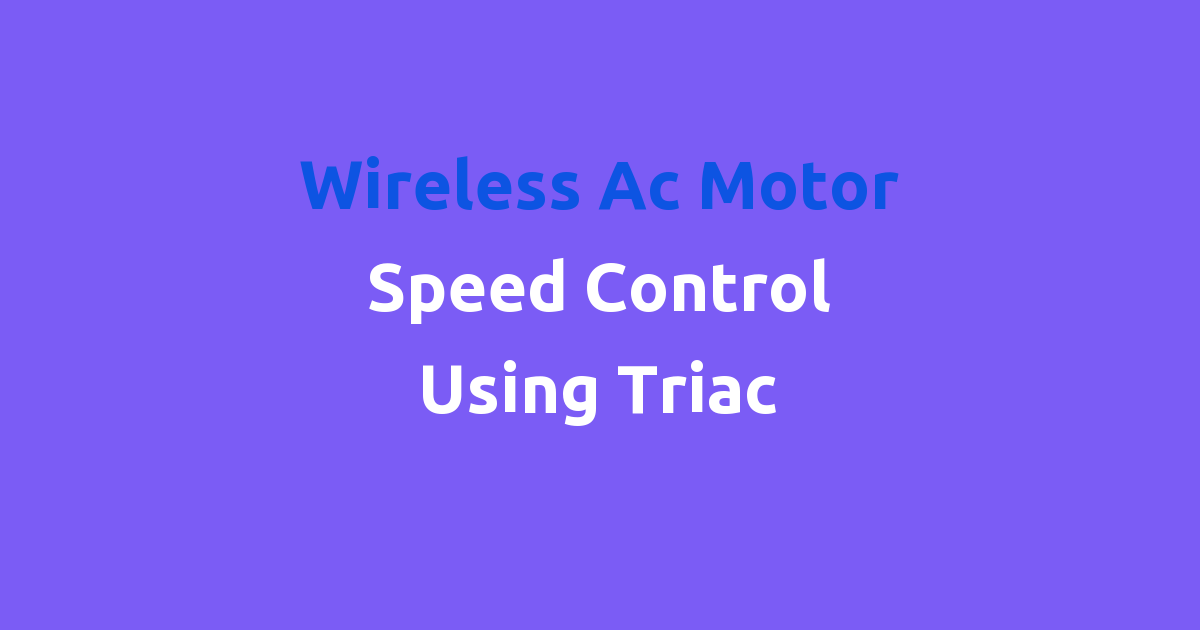Controlling the speed of an AC motor wirelessly using a triac.
Wireless AC Motor Speed Control using Triac
Introduction
In modern industries, the use of electric motors has become indispensable for various applications. However, the control of motor speed poses a significant challenge, especially in cases where precise and efficient speed control is required. One of the widely used methods for controlling AC motor speed is by using a Triac. In this project work, we aim to develop a wireless AC motor speed control system using Triac for efficient and accurate speed control.
Problem Statement
The traditional methods for controlling AC motor speed involve using manual switches or potentiometers, which are not only cumbersome but also limit the precision and efficiency of speed control. Additionally, the use of wired connections for controlling motor speed can lead to safety hazards in industrial environments. Hence, there is a need for a wireless control system that can provide seamless and precise control of AC motor speed.
Existing System
The existing systems for controlling AC motor speed typically use manual switches or potentiometers connected directly to the motor. While these systems are functional, they have several limitations. The lack of wireless connectivity restricts the mobility of operators, causing inconvenience in industrial settings. Moreover, the use of manual switches and potentiometers for speed control is not ideal for applications that require precise and efficient speed control.
Disadvantages:
– Limited mobility due to wired connections
– Lack of precision in speed control
– Safety hazards in industrial environments
– Cumbersome manual control methods
Proposed System
In our proposed system, we aim to address the limitations of the existing systems by developing a wireless AC motor speed control system using Triac. The Triac is a semiconductor device that can control the power supplied to the motor by regulating the flow of current. By integrating the Triac with a wireless control module, we can achieve seamless and efficient control of AC motor speed.
Advantages:
– Wireless connectivity for enhanced mobility
– Precise and efficient speed control
– Improved safety in industrial environments
– Seamless integration with existing systems
Features
Our wireless AC motor speed control system using Triac will have the following key features:
– Wireless connectivity: The system will allow operators to control motor speed wirelessly, enhancing mobility and convenience.
– Triac-based speed control: The integration of Triac will enable precise and efficient control of AC motor speed.
– Safety features: The system will incorporate safety measures to prevent accidents and ensure the wellbeing of operators.
– User-friendly interface: The system will have an intuitive interface for easy control and monitoring of motor speed.
Conclusion
In conclusion, the development of a wireless AC motor speed control system using Triac presents a significant advancement in the field of motor control technology. By addressing the limitations of the existing systems and incorporating innovative features, our proposed system offers a reliable and efficient solution for controlling AC motor speed. With the increasing demand for automation and precision in industrial applications, the wireless AC motor speed control system using Triac holds immense potential for enhancing productivity and safety in various industries.

